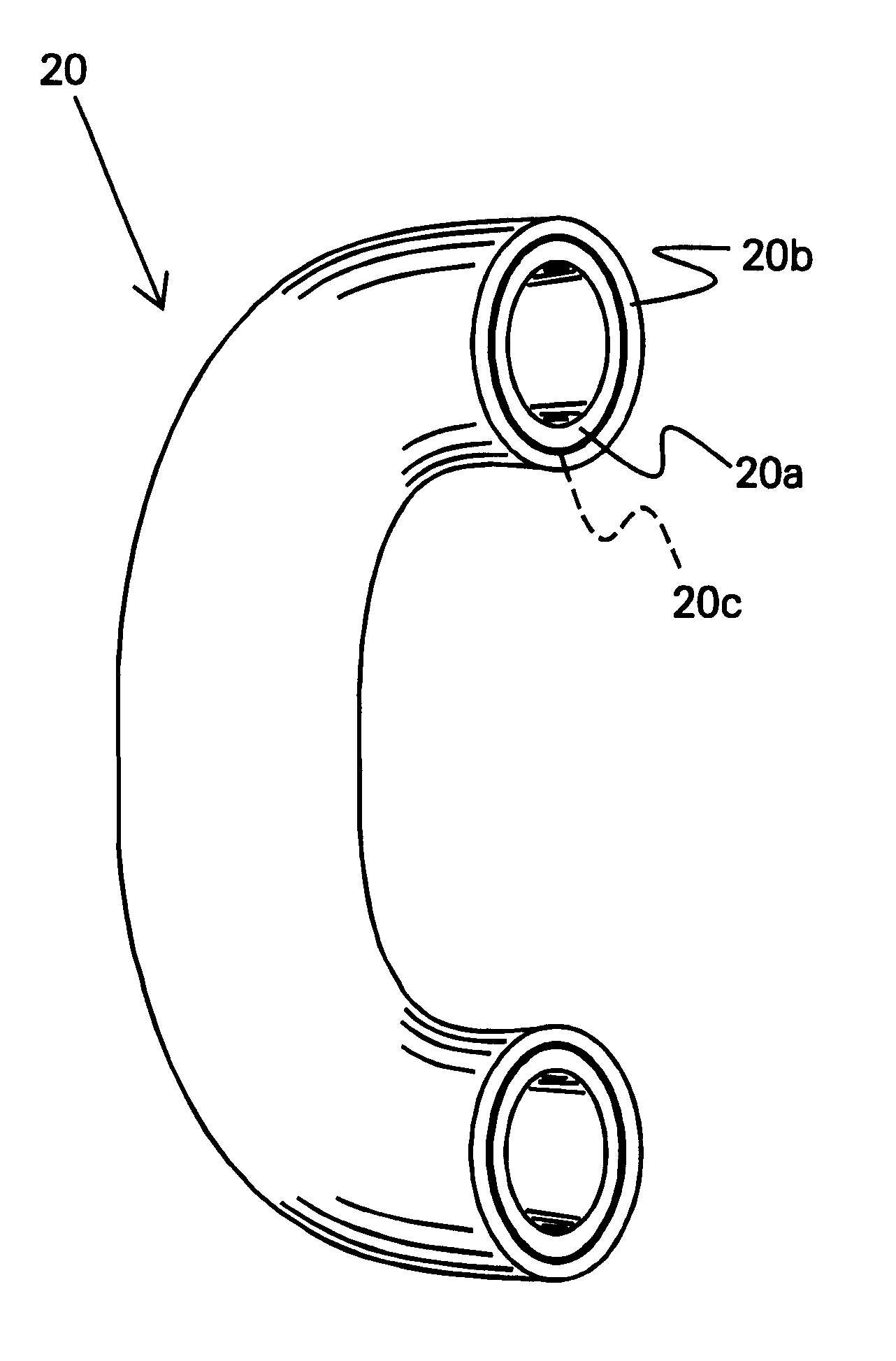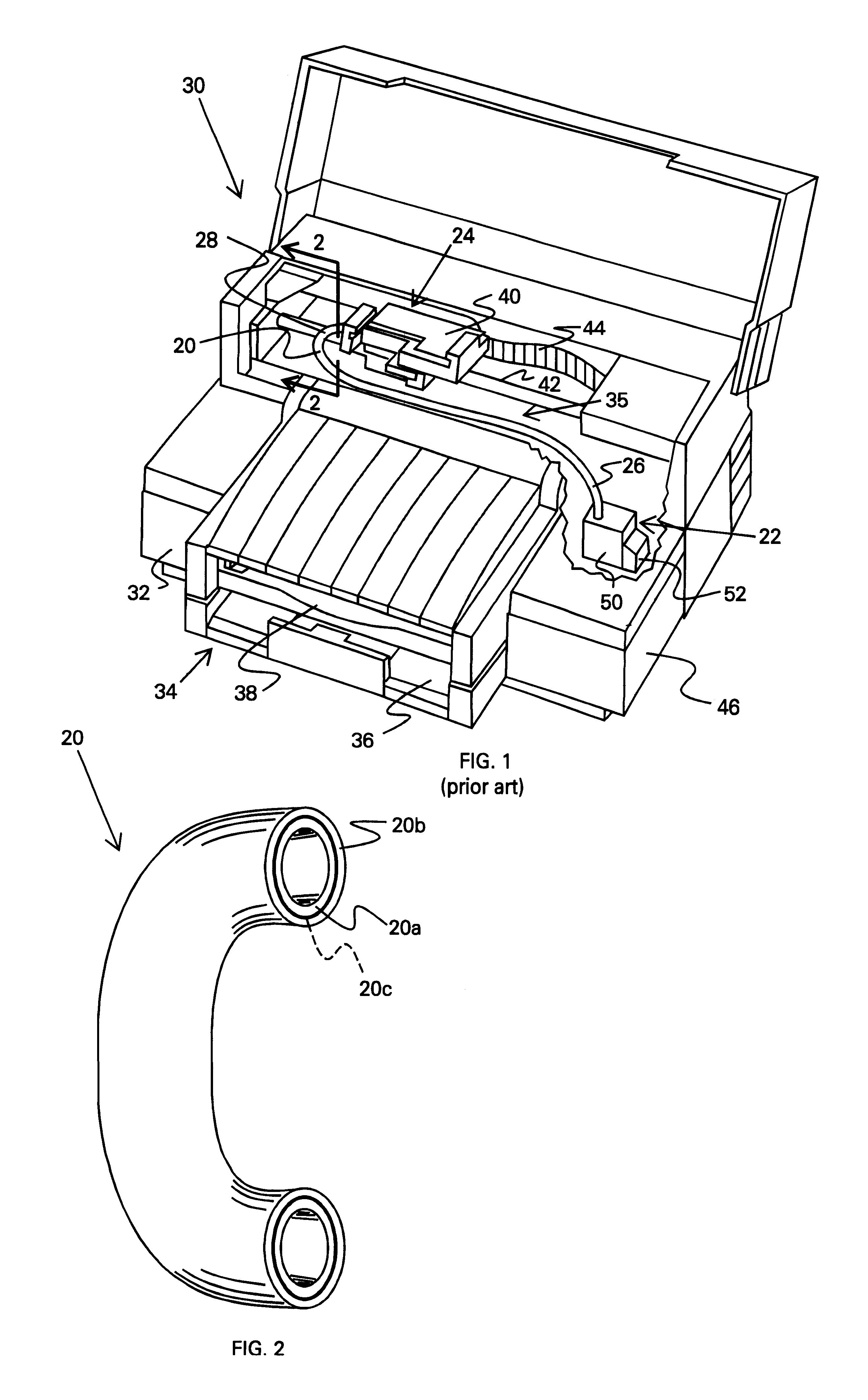Co-extruded tubing for an off-axis ink delivery system
a technology of co-extrusion and ink, which is applied in printing and other directions, can solve the problems of increasing the fatigue of the tube, reducing the lifetime of the tube, and inconvenient operation
- Summary
- Abstract
- Description
- Claims
- Application Information
AI Technical Summary
Benefits of technology
Problems solved by technology
Method used
Image
Examples
Embodiment Construction
FIG. 1 illustrates an embodiment of a flexible conduit 20, constructed in accordance with the present invention, which may be used to convey or transport a fluid therethrough from a first location 22 to a second location 24. The conduit or tube 20 has a first end 26 for receiving fluid at the first location 22, and a second end 28 for delivering fluid to the second location 26. It is apparent that the conduit system 20 may be used in a variety of different applications requiring a flexible conduit to couple together two remote locations. In particular, the conduit 20 is well suited for applications having the two locations 22, 24 moving relative to one another. For example, the conduit 20 may be useful in hydraulic applications, or various robotic applications requiring fluid conveyance, such as chemical sprays, paint sprays, coolant or lubricating systems, and the like.
One particularly useful implementation for discussing the characteristics of conduit is an ink jet printing mechan...
PUM
 Login to View More
Login to View More Abstract
Description
Claims
Application Information
 Login to View More
Login to View More - R&D
- Intellectual Property
- Life Sciences
- Materials
- Tech Scout
- Unparalleled Data Quality
- Higher Quality Content
- 60% Fewer Hallucinations
Browse by: Latest US Patents, China's latest patents, Technical Efficacy Thesaurus, Application Domain, Technology Topic, Popular Technical Reports.
© 2025 PatSnap. All rights reserved.Legal|Privacy policy|Modern Slavery Act Transparency Statement|Sitemap|About US| Contact US: help@patsnap.com


